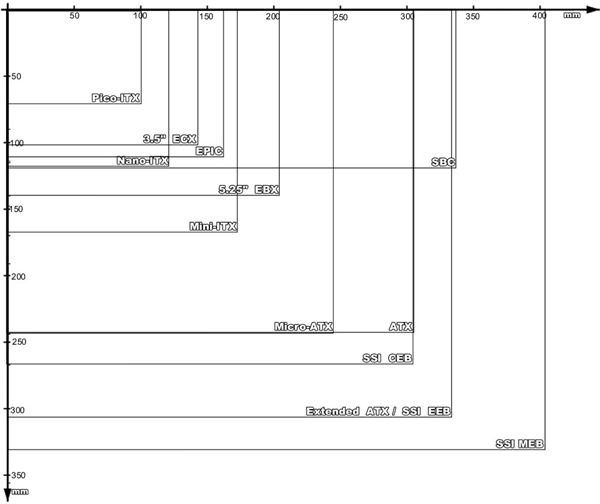What is the Motherboard Form Factor CEB
The ATX and EEB Form Factor
A form factor is a motherboard with specific dimensions. The AT motherboard form factor developed by IBM in the early 1980s was replaced as a standard by Intel with the ATX form factor. The dimensions of an ATX board are 12 in × 9.6 in (305 mm × 244 mm).
The ATX specification was a standard for a single processor form factor. The Enterprise Electronics Bay Specification (EEB) was developed from the ATX spec. It addressed the following areas of computer technology: support for dual-processor designs and support for current and new chipsets, support for multi processors, and support for memory control technologies. As form factors were changing in size and dimension, the standard did not change significantly; it was a single processor form factor. But this changed with EEB. This led to the Server System Infrastructure (SSI) CEB specification.
What is CEB Form Factor
CEB is the acronym for The Compact Electronics Bay Specification. It is a standard form factor designed for use by dual processor motherboards. The requirement was first proposed for value servers as well as workstations based on the Intel XEON processor. The dimensions of the CEB motherboard are 12 x 10.5 inch (305mm x 267mm).
The Xeon microprocessor is a CPU used in a multiprocessing or in a multi-socket-capable environment. It is an x86 microprocessor from Intel Corporation. This CPU belongs in a business or engineering server, workstation or embedded system markets. x86 microprocessors are typically 32 bit CPUs.
The CEB motherboards have an architecture structure similar to ATX IO connectors. They also have identical motherboard mounting holes as the ATX motherboards have, not withstanding the fact that the SSI CEB motherboards are bigger in size than ATX motherboards. They also have unusual processor mounting holes. By that it is clear that the rear panel opening has the same design for the EEB as well as ATX specification. There are expansion cards mounted on an SSI CEB motherboard which look similar to an ATX motherboard.
Several features stand out. For one, thermal energy behavior was standardized. Next, the arrangement of the processors was well defined, so the classification of the primary processor as well as the secondary appears deliberate and clear. This meant that a standard could be created for other components to be designed around in support of the form factor. But it was even used for motherboards that have only one processor, as long as the primary processor would be provided first.
This image shows the different dimensions of various form factors. The SSI CEB is slightly bigger than the ATX, but smaller than the Extended ATX/ SSI CEB form factor.
Summary
Form factors were traditionally designed based on the ATX model, with a one processor in mind design. The CEB is based on the XEON processor. But the CEB also incorporates design elements from two other specifications, the ATX and the EEB.
The EEB was designed to support multiprocessor chip motherboard design. From that spec and the ATX spec, the CEB form factor was designed and became a part of the form factors for multiprocess operations.
